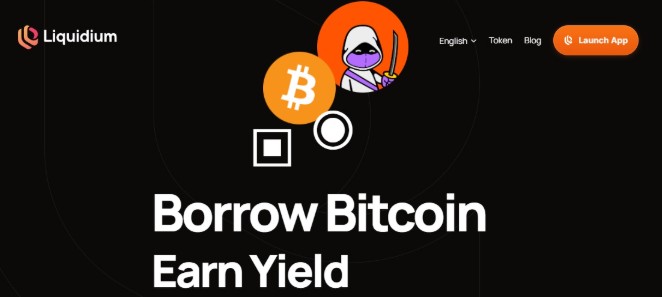Bitcoin lending has emerged as one of the most popular ways to earn yield on BTC. By lending your coins to borrowers looking to access bitcoin capital, you can earn interest on your BTC.
Read on to discover three non-custodial Bitcoin lending apps you can use to deploy funds in the Bitcoin lending market.
What Are Non-Custodial Bitcoin Lending Platforms?
Non-custodial Bitcoin lending platforms are applications that allow users to lend their bitcoin and earn interest while retaining control of their assets.
The concept of BTC lending is quite simple and straightforward–you’re essentially letting someone else borrow your bitcoin for a set amount of time, and in return, they pay you interest. Think of it as earning interest on a bank deposit, but it all happens on a blockchain.
While custodial lending may seem more convenient, it implies entrusting your bitcoin to a third-party platform. On the contrary, non-custodial lending keeps you in control of your bitcoin through the provided collateral. It also offers other advantages:
- Reduced risk of theft
- Greater transparency
- Lower counterparty risk
If you want to try lending bitcoin without having to give up custody of your holdings, you may want to consider the following three non-custodial bitcoin lending apps that fully fit the safety and reliability requirements.
Liquidium
Founded in 2022, the Liquidium bitcoin lending app is a peer-to-peer Bitcoin lending platform operating on Bitcoin Layer 1. By using Bitcoin-native assets, such as Ordinals, Runes, and BRC-20 tokens as collateral, borrowers can access bitcoin liquidity. At the same time, lenders can earn up to 380% APY on their BTC.
Key Features
- Lending and borrowing BTC against Ordinals, Runes, and BRC-20
- Instant loans for fast access to Bitcoin liquidity
- Runes Swaps for seamless Runes trading
Pros & Cons
Pros
- Easy access to diverse Bitcoin assets (Ordinals, Runes, BRC-20) as collateral.
- Flexible loan terms through custom requests and direct negotiation for agreeable conditions.
- Transparent interest calculations with clear formulas for all users.
- Access a global network of lenders and borrowers.
- Operates on the Bitcoin blockchain.
Cons
- Lenders have a 12-hour window to countersign loan offers, requiring timely action.
Hodl Hodl
Hodl Hodl, established in 2016, is a global peer-to-peer Bitcoin platform offering lending services that have earned its place on this list thanks to its privacy-first policy combined with multisig-based security and an ever-growing global user pool.
Key Features
- Enhanced security through a 2-of-3 multisignature escrow for every transaction.
- Support for over 1,000 different payment types and methods.
Pros & Cons
Pros
- Access a global network of lenders and borrowers.
- Multisig escrow significantly minimizes risks for both sides.
- Ensures a straightforward lending process with clear steps for loan creation, funding, and repayment.
Cons
- Finding suitable loan terms within the global pool isn’t entirely effortless.
- Hodl Hodl may put caps on the total number of contracts, offers, and trading volume.
Sovryn
Founded in 2020, Sovryn is a decentralized finance platform originally built on the Bitcoin sidechain, Rootstock, which has since expanded to other Layers, such as Build on Bitcoin (BoB), to offer Bitcoin DeFi solutions and technology. In addition to decentralized trading, staking, and liquidity provision, Sovyrn also provides access to non-custodial lending markets.
Key Features
- Zero-interest loans are issued in Sovryn Dollar (DLLR), a bitcoin-backed stablecoin.
- A range of Lending and borrowing pools.
- Access a global network of lenders and borrowers.
- Features a bridge to Ethereum and other networks.
Pros & Cons
Pros
- Develops a suite of DeFi solutions specifically designed for Bitcoin.
- DLLR reduces Sovryn’s dependency on popular stablecoins.
Cons
- Sovryn relies on Rootstock (and other Bitcoin Layers) instead of the Bitcoin mainnet.
Takeaway
Despite being united by their non-custodial nature, each of the reviewed Bitcoin lending apps provides something different to suit holders of BTC and Bitcoin-based assets.
If you’re looking for high yields as a lender and the security of collateralization against Bitcoin assets, Liquidium is probably the best choice for you. If you want to use a wide range of payment methods, Hodl Hodl is arguably your best option. Finally, if you’re looking for a broader Bitcoin DeFi ecosystem, you should probably take a look at Sovryn.
As always, evaluate each platform based on your personal risk tolerance and technical comfort before deploying any capital. Non-custodial lending lets you earn yield while keeping control of your keys—but with great power comes great responsibility. So, make sure you know how to manage your Bitcoin wallet keys, and never invest more than you can afford to lose.



